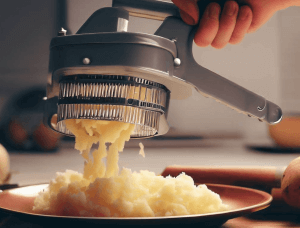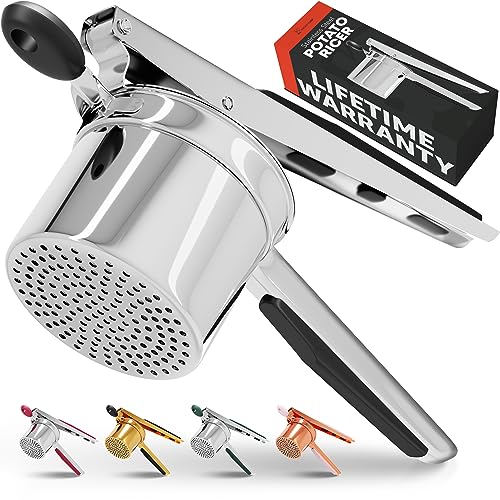What is the best Potato Ricer substitute?
Are you looking for a potato ricer substitute? From the classic but often overlooked potato masher to unconventional yet effective tools like a food mill or a coarse grater, there’s a range of choices for you to consider.
Say goodbye to the struggles of squeezing potatoes through the tiny holes of a traditional ricer and say hello to a whole new world of options. Join us as we discover these five surprising alternatives that will not only simplify your potato mashing process but also introduce a refreshing twist to your culinary repertoire. So, grab your apron and get ready to elevate your mashed potato game to a whole new level!
If you don’t own a potato ricer, or are just looking for an alternative to a potato ricer, there are a few easy options for you to choose from. Try using a Box Grater, Blender or Food processor, Food Mill, Masher, or even a good old Fork.
What is a Potato Ricer?
A potato ricer is a handy kitchen tool for mashing potatoes and other soft foods. It looks a bit like a large garlic press. You place cooked potatoes or other veggies inside, and when you squeeze the handles, it forces the food through small holes, creating a smooth and fluffy texture. It’s a fantastic way to make lump-free mashed potatoes or even puree other ingredients for various dishes. If you’re into cooking and experimenting with alternative ingredients, a potato ricer might come in handy for creating unique potato-based dishes or exploring substitutes for mashed potatoes.
And we have even provided you with the pefect recipe to make delicious creamy mashed potatos – your welcome.
Okay, before we look at your potato ricer substitute options, let’s deal with that empty cupboard situation!
Where can I buy Potato Ricer?
If you want to be more prepared and ensure you have the right kitchen equipment, then you should stock up now.
Nowadays, potato ricers are available in supermarkets, or if you prefer you can also purchase a potato ricer on-line.
So why not jump on and place your order today.
STOCK UP NOW!
Heavy Duty Stainless Steel Potato Ricer
Make delicious creamy potatoes with this highly rated potato ricer. Simple to use, dishwasher friendly and rust resistat.
Suitable for the Home Chef or a Professional Cook. Elevate your dishes. Enjoy.
What can I substitute for a Potato Ricer?
Here are some of the best alternatives to a Potato Ricer.
- Potato Masher
- Blender or Food processor
- Food Mill
- Box Grater
- Fork
Potato Ricer substitutes
Potato Masher
This is the most common substitute. A good old potato masher can still get your potatoes reasonably smooth. Just press and mash the cooked potatoes until they reach your desired consistency. It might not be as fine as a ricer, but it works. While it won’t give you the same ultra-smooth texture, a potato masher is a handy tool for mashing potatoes and other soft foods. Here’s how to do it:
- Cook your potatoes: Boil or steam your potatoes until they’re tender and easily pierced with a fork.
- Drain the potatoes: Once they’re cooked, drain the potatoes thoroughly to remove excess moisture.
- Mash with the potato masher: Transfer the cooked potatoes to a large bowl and use the potato masher to press down and mash them. You can apply more pressure for a smoother texture or leave some lumps for a rustic feel.
- Season and mix: Add in your desired seasonings, such as butter, milk, salt, and pepper, and mix everything together until well combined.
Using a potato masher is a great way to make mashed potatoes without the need for a potato ricer. It might not achieve the same level of smoothness, but it can still result in delicious and comforting mashed potatoes for your recipes.
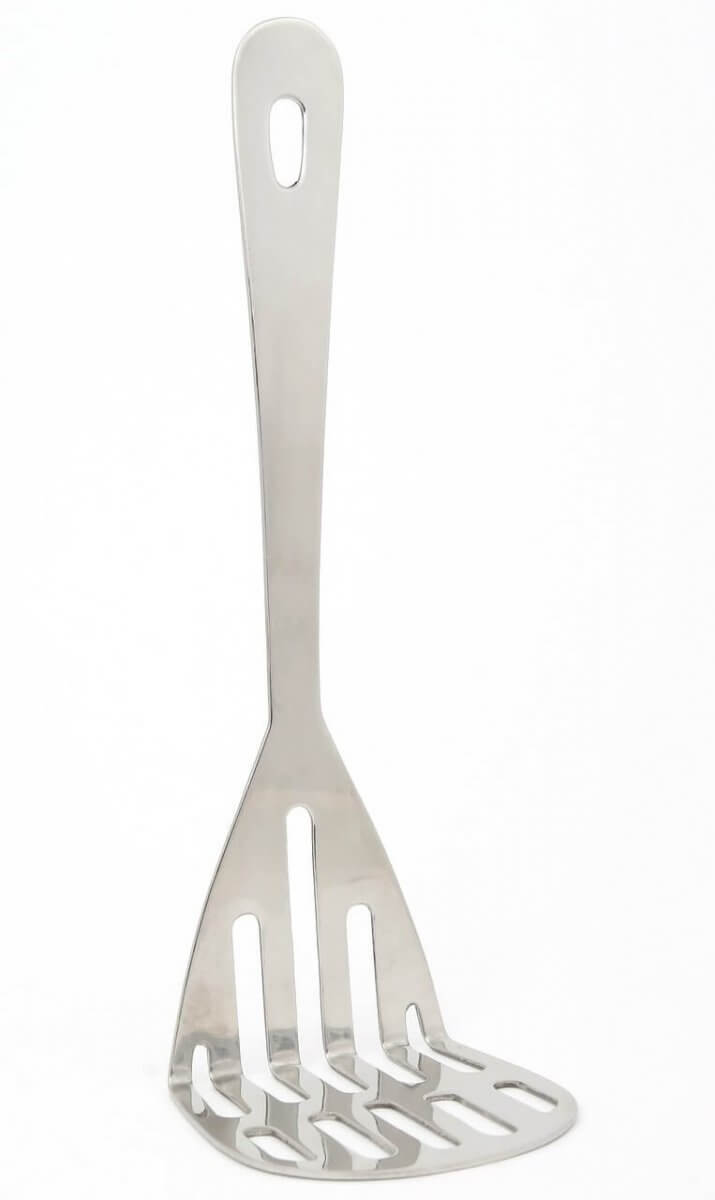
Blender or Food Processor
If you don’t mind a slightly different texture, you can use a blender or food processor to puree your cooked potatoes. Be cautious not to over-process, as it can make them gluey. You can certainly use a food processor as an alternative to a potato ricer for making mashed potatoes or similar dishes.
- Cook the potatoes: Start by boiling or steaming your potatoes until they are soft and easily pierced with a fork. Drain them thoroughly.
- Cut into chunks: Cut the cooked potatoes into smaller chunks. This will help the food processor work more efficiently.
- Process in batches: Place a batch of the potato chunks in the food processor. Be careful not to overfill it. Pulse or process until the potatoes reach your desired level of smoothness. Keep an eye on the texture to avoid over-processing, which can make them gluey.
- Season and blend: Add in your preferred seasonings like butter, milk, salt, and pepper. Pulse or blend briefly to mix everything evenly.
Using a food processor can produce very smooth mashed potatoes and is an excellent option, especially when you need to make larger quantities. Just remember to work in batches if you have a lot of potatoes to process.
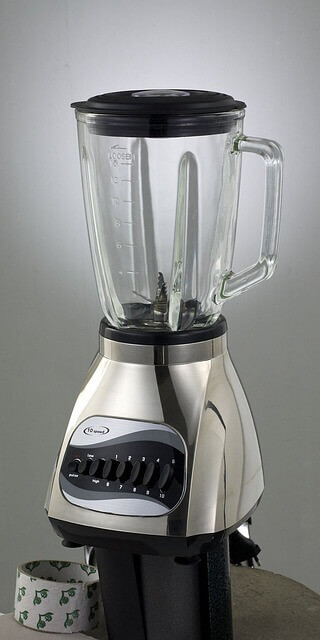
Food Mill
A food mill is a kitchen tool designed for pureeing and straining cooked fruits, vegetables, or other soft foods. It typically consists of a hand-cranked mechanism with a perforated disk that rotates against a stationary disk. Food is pushed through the holes in the disk, resulting in a smooth puree while leaving behind any skins, seeds, or other unwanted elements.
If you have a food mill, it can be a great alternative. It works somewhat like a potato ricer, as it pushes the potatoes through small holes, resulting in a smooth texture.
- Cook your potatoes: Start by cooking your potatoes until they are soft and easily pierced with a fork.
- Cut into chunks: Cut the cooked potatoes into smaller chunks. This will make it easier to process them with the food mill.
- Process with the food mill: Place the potato chunks in the food mill’s hopper. Turn the hand-crank to force the potatoes through the perforated disk. The result will be a smooth and fluffy puree on the other side.
- Season and mix: Once you have your potato puree, add in your preferred seasonings like butter, milk, salt, and pepper. Mix everything together until well combined.
A food mill can produce mashed potatoes with a texture similar to that of a potato ricer, and it’s especially handy when you need to process larger quantities. So, go ahead and use your food mill for your cooking adventures!
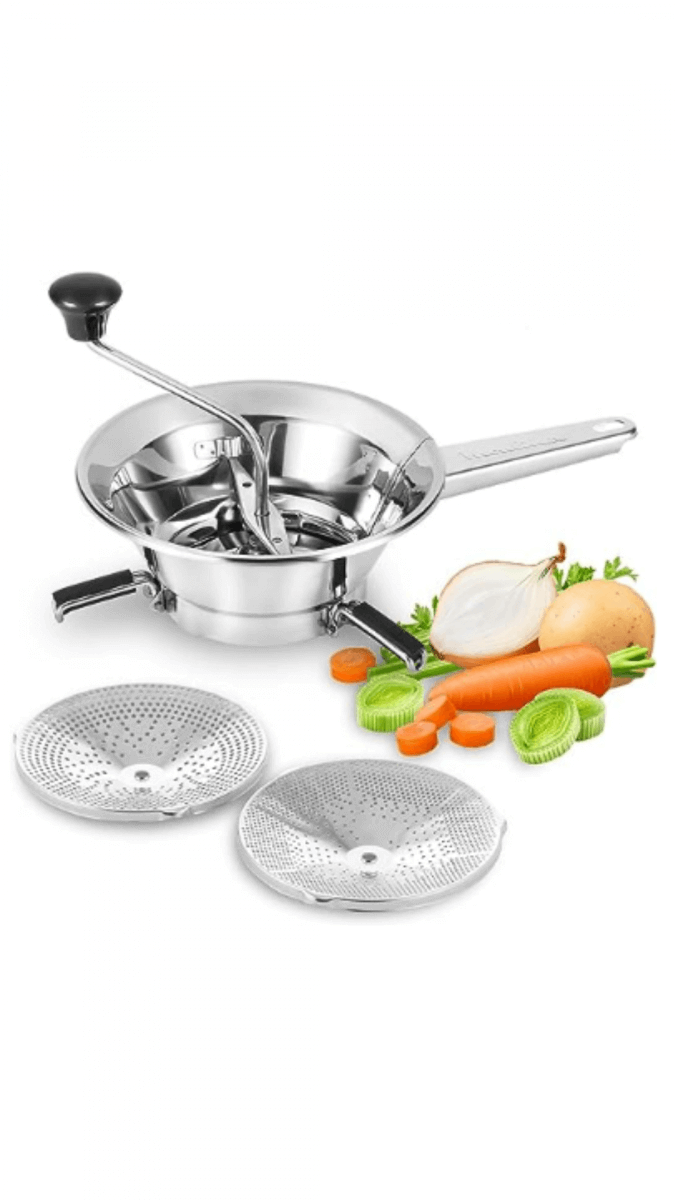
Box Grater
A box grater is a kitchen tool typically made of metal or plastic and features multiple sides with various grating surfaces. Each side of the grater has different-sized holes or blades, allowing you to grate or shred ingredients like cheese, vegetables, or fruits.
While a box grater isn’t designed for mashing or pureeing like a potato ricer, you can use it as a creative alternative in certain situations. While unconventional, a box grater with small holes can work in a pinch. Just grate the cooked potatoes carefully to achieve a finer texture. Here’s how you can use a box grater to achieve a different texture for your mashed potatoes:
- Cook your potatoes: Begin by cooking your potatoes until they are tender.
- Cool and peel: Allow the potatoes to cool slightly, then peel them.
- Grate the potatoes: Use the finest side of the box grater to grate the peeled potatoes. This will create very fine potato shreds.
- Season and mix: Transfer the grated potatoes to a bowl and add your desired seasonings like butter, milk, salt, and pepper. Mix everything thoroughly.
Using a box grater in this way won’t give you the same texture as a potato ricer, but it can create a unique and slightly different mashed potato dish with fine potato shreds.
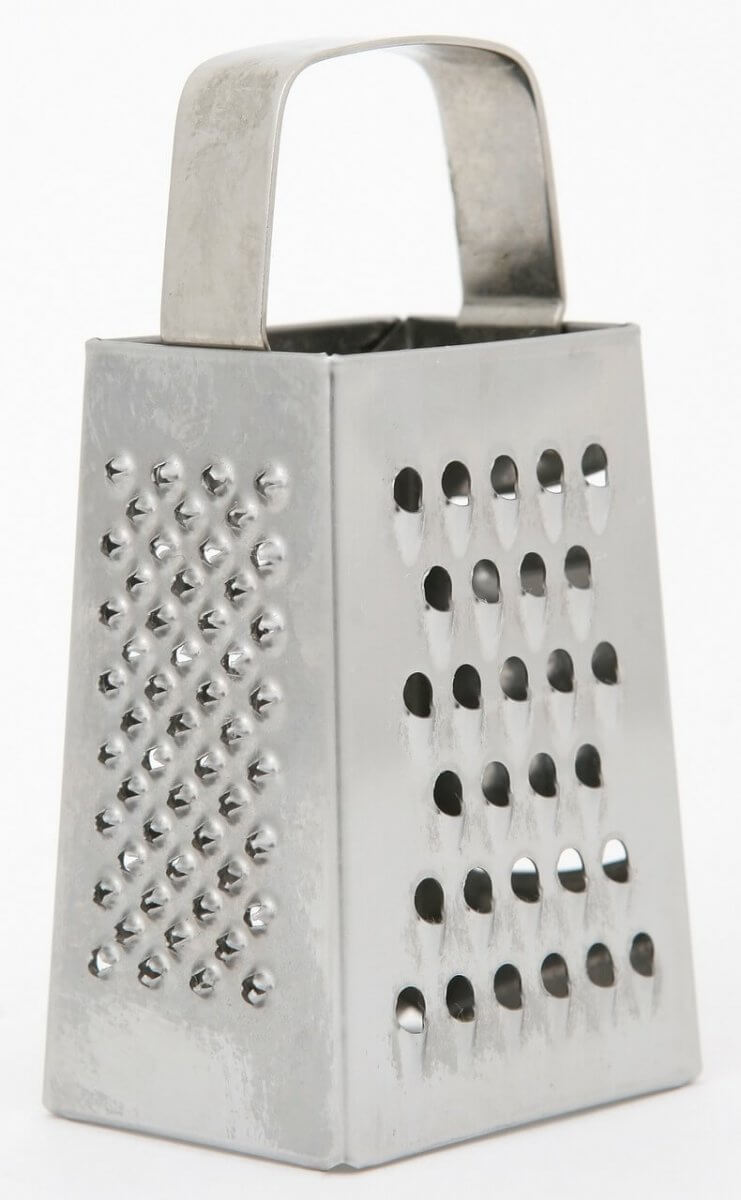
Fork
If you want a rustic texture, you can also use a fork or a sturdy whisk to mash the potatoes. It won’t be as smooth, but it can add a nice texture to your dish.Using a fork as a substitute for a potato ricer is a simple and effective method that can give you a more rustic and chunky texture for your mashed potatoes. Here’s how to do it:
- Cook your potatoes: Start by cooking your potatoes until they are soft and easily pierced with a fork. You can boil or steam them.
- Drain and cool: Once the potatoes are cooked, drain them thoroughly and allow them to cool slightly. This makes them easier to handle.
- Peel (optional): If you prefer mashed potatoes without the potato skins, you can peel the cooked potatoes at this point. However, leaving the skins on can add texture and flavor.
- Mash with a fork: Take a fork and use it to mash the potatoes. Press down on the potatoes and use a twisting motion to break them apart. Continue mashing until you achieve your desired level of smoothness or chunkiness.
- Season and mix: Add your preferred seasonings like butter, milk, salt, and pepper to the mashed potatoes. Mix everything together until well combined.
Using a fork is a great way to create a more rustic and homemade feel for your mashed potatoes. It may not produce the same fine texture as a potato ricer, but it adds a charming touch to your dish.
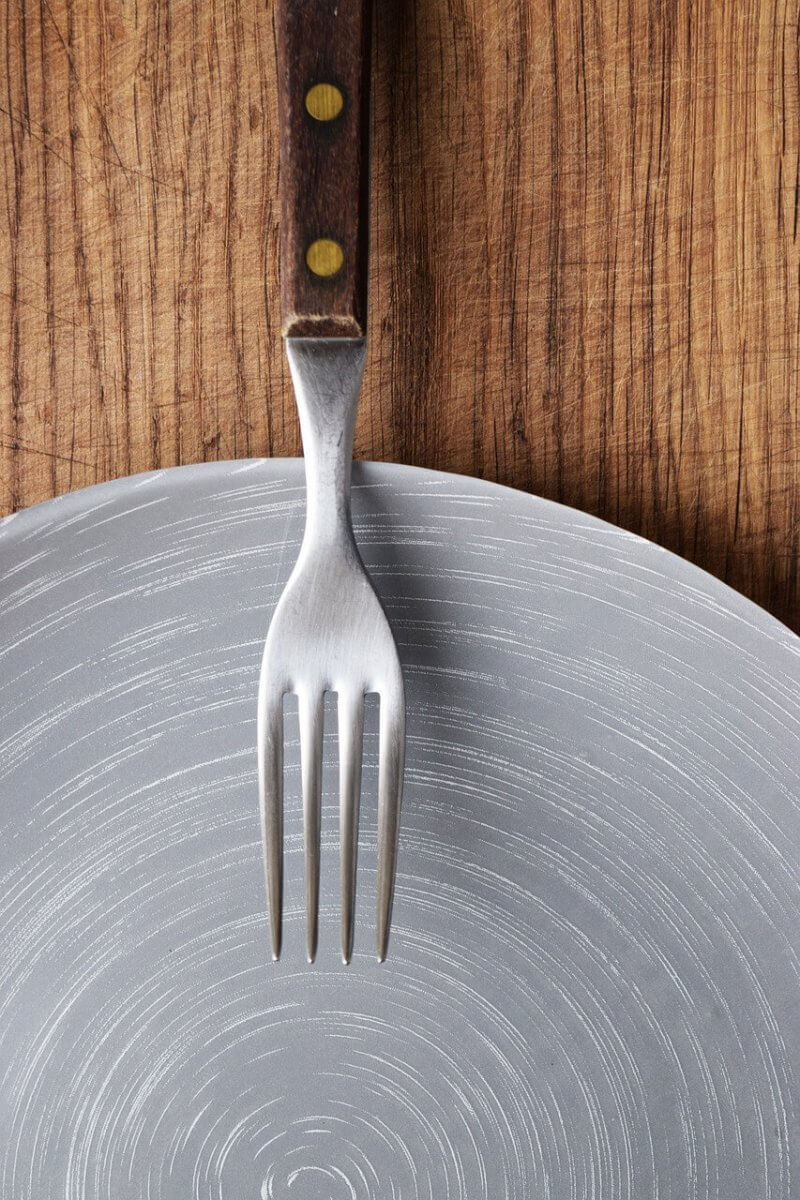
Creamy Mashed Potatoes – recipe
Creamy mashed potatoes are a classic comfort food. just use this recipe to create delicious, creamy, mashed potatoes.
Ingredients:
- 2 pounds russet potatoes
- 1 cup whole milk
- 4 tablespoons unsalted butter
- Salt and pepper to taste
- Optional: minced garlic, herbs, sour cream, or cream cheese for extra flavor
Cooking Method:
- Prepare the Potatoes: Start by peeling the russet potatoes and chopping them into evenly sized chunks. This helps ensure they cook evenly.
- Boil the Potatoes: Place the potato chunks in a large pot and cover them with cold water. Add a generous pinch of salt to the water. Bring the water to a boil over medium-high heat, then reduce the heat to simmer. Cook the potatoes for about 15-20 minutes or until they are fork-tender. You should be able to easily pierce a potato chunk with a fork.
- Warm the Milk and Butter: While the potatoes are cooking, in a separate saucepan, warm the whole milk and unsalted butter over low heat. You can also add minced garlic or herbs for added flavor. Heat the milk and butter until the butter is fully melted, then remove it from the heat.
- Mash the Potatoes: Once the potatoes are done, drain them thoroughly and return them to the pot. Use a potato masher or a potato ricer to mash the potatoes until they are smooth and lump-free. If you prefer chunkier mashed potatoes, mash them to your desired consistency.
- Add the Milk and Butter: Slowly pour the warm milk and butter mixture into the mashed potatoes while stirring gently. This will help achieve a creamy texture. Keep adding the milk mixture and stirring until the potatoes reach your desired level of creaminess.
- Season and Customize: Season the mashed potatoes with salt and pepper to taste. You can also add any optional ingredients like sour cream or cream cheese for extra creaminess and flavor. Adjust the seasoning as needed, and don’t forget to taste along the way.
- Serve: Your creamy mashed potatoes are now ready to be served! You can garnish them with a bit of melted butter or fresh herbs for a nice presentation.
Summary for Potato Ricer substitutes
Okay – that’s you all sorted with suitable substitutes for a Potato Ricer.
In summary, if you don’t have a potato ricer, you can use various alternatives to achieve similar results when making mashed potatoes or similar dishes. Here are some options:
- Potato Masher: A common and effective substitute for a potato ricer. It gives you a chunkier texture.
- Food Processor: Useful for creating very smooth mashed potatoes, though be cautious not to over-process.
- Food Mill: A versatile tool designed for pureeing and straining soft foods, providing a smooth texture.
- Box Grater: Unconventional but creative, you can grate cooked potatoes for a unique texture.
- Fork: A simple and rustic option for mashing potatoes, resulting in a homemade feel.
Each of these alternatives has its own texture and style, so choose the one that suits your recipe and personal preference.
We have gathered together a lot more facts on ingredients such as herbs, spices, oils, nuts, etc. if you would like to learn some more.
Or if you need to swap out another ingredient have a look at our Substitutes section.
